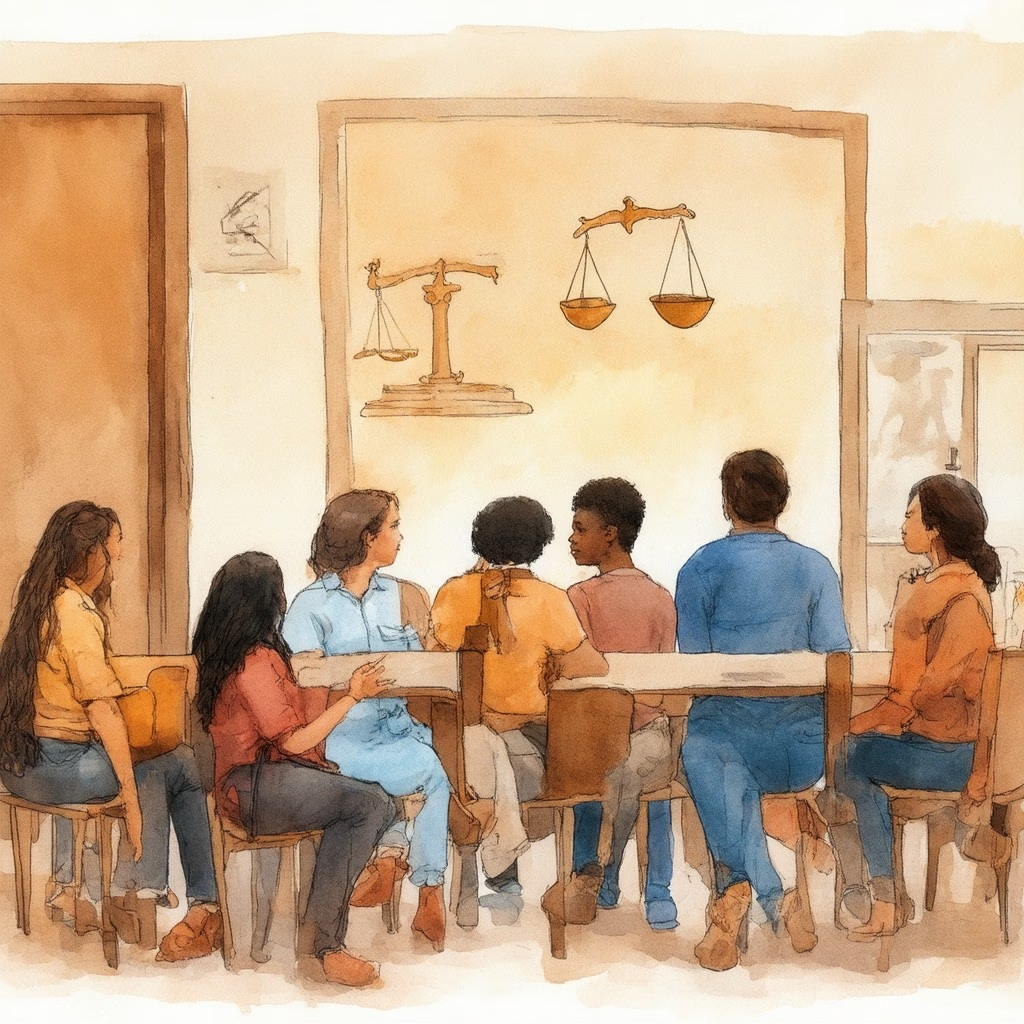Key Takeaways
- Accessing low income attorney assistance is vital for individuals facing legal challenges but lacking financial resources.
- Legal aid programs typically require income to be at or below 125% of the Federal Poverty Guidelines for eligibility.
- Gather necessary documentation, including proof of income and identification, to apply for free legal services.
- Resources like Legal Services Corporation can guide individuals in finding local legal aid organizations.
- Many states offer free divorce lawyers and legal assistance programs specifically for low-income families.
- Utilizing community resources and nonprofit organizations can provide additional support for navigating legal issues.
In today’s complex legal landscape, navigating the world of low income attorney assistance can be daunting for many individuals and families. This essential guide aims to illuminate the pathways to accessing free legal services and understanding eligibility for financial aid. We will explore critical topics such as the maximum income to qualify for legal aid, the various legal aid programs available, and how to apply for these vital services. Additionally, we will provide insights on finding free lawyers in states like Washington and Massachusetts, along with resources for low-income families seeking legal assistance. Whether you’re looking for a free divorce lawyer for low income or need help with legal fees, this guide will equip you with the knowledge to secure the legal support you deserve. Join us as we delve into the essential aspects of legal aid and discover how to navigate the system effectively.
Understanding Legal Aid Eligibility for Low-Income Individuals
Legal aid is a vital resource for low-income individuals seeking assistance with legal issues. Understanding the eligibility criteria is essential for accessing these services effectively. Legal aid programs are designed to help those who cannot afford legal representation, ensuring that everyone has access to justice, regardless of their financial situation.
Overview of Legal Aid Programs
Legal aid programs provide free or low-cost legal services to individuals and families facing various legal challenges. These programs are typically funded by government sources and nonprofit organizations, aiming to assist those who meet specific income thresholds. The primary goal is to offer legal assistance in areas such as family law, housing disputes, and immigration issues. Many legal aid organizations also focus on providing legal assistance free of charge, making it easier for low-income families to navigate the legal system.
How to Apply for Legal Aid Services
Applying for legal aid services involves several steps, which can vary by organization. Generally, the process includes:
- Determine Eligibility: To qualify for legal aid, income thresholds are primarily based on the Federal Poverty Guidelines, which are updated annually. Here are the key points regarding maximum income limits for legal aid eligibility:
- 125% of Federal Poverty Guidelines: This is the most commonly used threshold by Legal Aid organizations funded by the Legal Services Corporation (LSC). For example, in 2023, this would equate to an annual income of approximately $16,100 for an individual or $33,125 for a family of four.
- 200% of Federal Poverty Guidelines: Some Legal Aid organizations may have more flexible income criteria, allowing individuals and families with incomes up to 200% of the Federal Poverty Guidelines to qualify for assistance. This translates to about $25,520 for an individual and $52,400 for a family of four in 2023.
- Variable Income Limits: Specific income limits can vary significantly depending on the Legal Aid organization and the type of legal case involved. Certain organizations may consider additional factors such as expenses, family size, and the nature of the legal issue when determining eligibility.
- Gather Documentation: Applicants typically need to provide proof of income, identification, and any relevant legal documents related to their case.
- Submit an Application: Applications can often be submitted online, via mail, or in person at local legal aid offices. It’s important to follow the specific instructions provided by the organization.
For the most accurate and updated information, individuals seeking legal aid should consult the specific Legal Aid organization in their area or visit resources like the Legal Services Corporation website or the Gov Guider platform, which provides guidance on accessing legal resources based on income and other criteria.

Understanding Legal Aid Eligibility for Low-Income Individuals
Legal aid programs play a crucial role in providing low income attorney assistance to individuals who cannot afford legal representation. These programs are designed to help low-income families navigate legal challenges, ensuring that everyone has access to justice regardless of their financial situation. Understanding the eligibility criteria for these programs is essential for those seeking free legal services.
Overview of Legal Aid Programs
Legal aid programs vary by state but generally offer a range of services, including assistance with family law, housing issues, and immigration matters. In many cases, these programs are funded by government grants and donations, allowing them to provide legal assistance for low-income individuals at no cost. To qualify for these services, applicants typically must meet specific income guidelines, which are often set at or below 125% of the federal poverty level.
For example, in Washington State, individuals seeking low-income legal assistance can access resources through organizations like the Northwest Justice Project (NJP) and local legal aid providers. These organizations help applicants understand their rights and the legal processes involved in their cases.
How to Apply for Legal Aid Services
Applying for legal aid services involves several steps, which may vary depending on the state and the specific program. Here’s a general guide on how to apply:
- Determine Eligibility: Check if your income falls within the required limits for low income attorney assistance. Most programs require documentation of income and household size.
- Gather Necessary Documents: Prepare documents that may include pay stubs, tax returns, and any relevant legal paperwork.
- Contact Legal Aid Organizations: Reach out to local legal aid providers or visit their websites to find application forms. In Washington State, you can call 2-1-1 for assistance in locating legal aid resources.
- Complete the Application: Fill out the application form accurately and provide all requested information. Be sure to explain your legal issue clearly.
- Follow Up: After submitting your application, follow up with the organization to check on the status of your request and to provide any additional information if needed.
For immediate assistance, consider contacting the CLEAR Hotline at 1-888-201-1014, which offers legal advice and referrals during weekdays. By utilizing these resources, low-income individuals can access the legal support they need to address their challenges effectively.
Understanding Income Thresholds for Legal Aid
When seeking low income attorney assistance, understanding the income thresholds for legal aid is crucial. Legal aid programs are designed to help individuals and families who cannot afford legal representation. These programs typically set income limits based on the federal poverty level, which varies annually. In general, to qualify for legal aid, your income must be at or below 125% of the federal poverty level. For example, in 2025, this threshold is approximately $40,187 for a family of four and $19,562 for an individual.
Income Guidelines for Low-Income Attorney Assistance
Each state has its own specific guidelines for determining eligibility for legal aid legal services. Here are some key points to consider:
- Federal Poverty Guidelines: Legal aid organizations often use the federal poverty guidelines to assess eligibility. These guidelines are updated annually and can be found on government websites.
- Household Size: Your household size plays a significant role in determining your eligibility. The income limits are adjusted based on the number of individuals in your household.
- Income Sources: All sources of income, including wages, benefits, and other financial support, are considered when evaluating eligibility for low-income legal assistance.
How to Determine Eligibility for Legal Aid
To determine if you qualify for low income attorney assistance, follow these steps:
- Assess Your Income: Calculate your total household income and compare it to the income guidelines for your state.
- Gather Documentation: Prepare necessary documentation, such as pay stubs, tax returns, and proof of benefits, to verify your income and household size.
- Contact Legal Aid Organizations: Reach out to local legal aid organizations or visit their websites to learn about their specific eligibility requirements and application processes. Resources like Legal Services Corporation can provide valuable information.
Understanding Income Thresholds for Legal Aid
When seeking low income attorney assistance, understanding the income thresholds for legal aid is crucial. Legal aid programs are designed to help individuals and families who cannot afford legal representation. The eligibility criteria often hinge on income levels, which can vary by state and the specific legal aid organization. Generally, to qualify for legal aid, your income must fall below a certain percentage of the federal poverty level. This percentage can range from 125% to 200%, depending on the program. For instance, if the federal poverty level for a family of four is $27,750, then the income threshold for legal aid could be between $34,688 and $55,500.
Income Guidelines for Low-Income Attorney Assistance
To determine eligibility for low-income attorney assistance, it is essential to review the specific income guidelines set by legal aid organizations. These guidelines typically consider not only your gross income but also the number of dependents in your household. For example, a single individual may qualify for legal aid with an income of around $17,000, while a family of four might need to stay under $34,000. Additionally, some programs may offer assistance to those who are slightly above these thresholds if they can demonstrate significant financial hardship.
How to Determine Eligibility for Legal Aid
Determining your eligibility for legal aid can be straightforward. Most legal aid organizations provide an online application or a pre-screening questionnaire. Here are the steps you can follow:
- Gather Financial Documents: Collect your income statements, tax returns, and any other relevant financial information.
- Visit Legal Aid Websites: Check the websites of local legal aid organizations for specific eligibility criteria and application processes. Resources like LawHelp.org can guide you to the right services.
- Complete the Application: Fill out the application form accurately, providing all requested information about your income and household size.
- Follow Up: After submitting your application, follow up with the organization to confirm receipt and inquire about the next steps.
By understanding these guidelines and following the application process, you can access the legal aid legal services you need. For more information on financial assistance for legal aid, visit this resource.

Cost of Legal Aid Services and Financial Assistance
Legal aid services are a vital resource for individuals facing legal challenges but lacking the financial means to hire a private attorney. Understanding the cost structure and available financial assistance can help low-income individuals access the legal support they need.
Overview of Free Legal Services Available
Legal aid lawyers typically provide their services at no cost to individuals who meet specific income eligibility requirements. These not-for-profit agencies aim to assist those who cannot afford private legal representation. Here are key points regarding the cost and availability of legal aid services:
1. **Cost Structure**: Legal aid services are generally free for eligible individuals. However, some legal aid offices may have sliding scale fees based on income, allowing for low-cost legal assistance for those who do not qualify for completely free services.
2. **Eligibility Criteria**: Most legal aid organizations prioritize clients with very low incomes, but some may have more flexible income guidelines. It is essential to check with local legal aid offices to understand their specific eligibility requirements.
3. **Types of Services Offered**: Legal aid lawyers can assist with various legal issues, including family law, housing disputes, immigration matters, and public benefits. Many offices also provide self-help resources, such as legal forms and guides, to empower individuals to navigate their legal challenges independently.
4. **Finding Legal Aid**: To locate a legal aid office in your area, you can visit resources like LawHelp.org, which connects individuals with local legal aid services based on their state and legal needs.
5. **Government Resources**: For additional information on legal aid and resources, the U.S. government provides guidance through various platforms, ensuring that individuals are aware of their rights and available legal assistance.
For more detailed information, it is advisable to consult the National Legal Aid & Defender Association (NLADA) or your local bar association, which can provide further insights into legal aid services and eligibility.
Financial Help for Legal Fees and Assistance Programs
In addition to free legal services, various financial assistance programs can help low-income individuals manage legal fees. Here are some options to consider:
– **LIHEAP Assistance**: The Low-Income Home Energy Assistance Program (LIHEAP) can provide financial aid to help cover energy costs, which can indirectly support individuals facing legal issues by alleviating financial burdens.
– **Legal Aid Programs**: Many legal aid organizations offer financial help for legal fees, ensuring that individuals can access necessary legal representation without overwhelming financial strain.
– **Community Resources**: Local nonprofits and community organizations often have programs designed to assist low-income families with legal costs, including free divorce attorneys and family law assistance.
– **State-Specific Programs**: Each state may have unique programs aimed at providing financial assistance for legal fees. Researching local resources can uncover additional support options tailored to specific legal needs.
By exploring these financial assistance avenues, individuals can better navigate their legal challenges while minimizing the financial impact. For more information on legal aid resources, visit [Gov Guider](https://govguider.com/navigating-free-legal-services-to-senior-citizens-essential-resources-income-qualifications-and-costs-explained/) for comprehensive guides and support.
What is the Maximum You Can Make to Qualify for Financial Aid?
Understanding financial aid eligibility for legal services is crucial for low-income individuals seeking assistance. While there is no specific income cut-off for federal financial aid, several factors determine eligibility. These include family size, year in school, cost of attendance, dependency status, and other financial factors. Each of these elements plays a significant role in assessing how much aid you may qualify for, particularly when seeking legal aid legal services.
Understanding Financial Aid for Attorney Fees
Financial aid for attorney fees is designed to help low-income individuals access necessary legal representation. Various programs provide assistance, including the Legal Services Corporation, which offers resources for those in need of legal help. Additionally, state-specific programs may offer financial assistance for legal aid tailored to local needs.
How to Apply for Low-Income Assistance Programs
Applying for low-income assistance programs can be straightforward if you follow the right steps. Start by gathering necessary documentation, including proof of income, family size, and any relevant financial information. Many organizations, such as LawHelp.org, provide guidance on the application process. You can also explore options for low-income attorney assistance to find resources that fit your situation.
Free Divorce Lawyer for Low-Income
Navigating divorce can be particularly challenging for low-income families, especially when financial resources are limited. Fortunately, there are various options available for obtaining low income attorney assistance specifically for divorce cases. Understanding these resources can help you secure the legal support you need without incurring significant costs.
Legal Assistance for Divorce and Family Law
Many organizations offer free legal services for individuals facing divorce. These services are designed to assist low-income families in navigating the complexities of family law. Here are some key resources:
- Legal Aid Organizations: Many states have legal aid organizations that provide free or low-cost legal assistance to those who qualify. For example, LawHelp.org can help you find legal aid in your area.
- Pro Bono Services: Some attorneys offer pro bono services, meaning they provide legal representation for free. You can check with local bar associations, such as the American Bar Association, for lists of attorneys willing to take on pro bono cases.
- Nonprofit Organizations: Various nonprofits focus on family law and may offer free legal consultations or representation. Research local nonprofits that specialize in family law to see what services they provide.
Support for Low-Income Families Seeking Divorce Services
In addition to legal representation, low-income families can access various support services to help them through the divorce process. These may include:
- Financial Assistance Programs: Programs like the LIHEAP (Low-Income Home Energy Assistance Program) can help alleviate some financial burdens, allowing families to allocate resources toward legal fees.
- Community Resources: Many community centers and local government offices provide resources and workshops on navigating divorce, which can be invaluable for those with limited financial means.
- Hotlines and Online Resources: Free legal advice hotlines can offer immediate assistance and guidance. For example, some states have dedicated hotlines for family law inquiries.
By utilizing these resources, low-income individuals can find the necessary legal assistance for divorce without the burden of high legal fees. For more information on accessing free legal help resources, visit Gov Guider.




